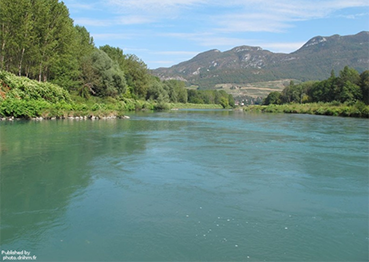

The Rhône Ecological Restoration Observatory (RhônEco) follows on from the monitoring carried out as part of the ten-year programme to restore the hydraulic and ecological quality of the Rhône, launched in 1998. Along with the Observatoire des Sédiments du Rhône (OSR, 2009), it is one of the federating programmes run by the Zone Atelier Bassin du Rhône (ZABR) as part of the Plan Rhône-Saône.
RhônEco is a research programme whose central objective is to assess and predict the effects of ecological restoration projects implemented on the Rhône. It is based on a dedicated monitoring system. The restoration operations concerned are:
RhônEco acts as a long-term ecological observatory and contributes to the management of the river ecosystem. The main objectives of the programme are to analyse the ecological effects of restoration and to place them in the context of the current rapid global changes. The aim is also to assess the ability of scientific teams to predict these effects and thus help define the river's ecological potential.
The monitoring carried out as part of RhônEco began prior to the restoration operations, in order to establish the initial conditions essential for assessing the effects of the restoration. The programme is now being implemented in 9 sectors between Switzerland and the Mediterranean (Chautagne, Belley, Brégnier-Cordon, Miribel, Pierre-Bénite, Péage-de-Roussillon, Baix-Logis-Neuf, Montélimar and Donzère-Mondragon).
RhônEco is embarking on a new phase of research over the next 5 years (2024-2028). This new programme is based on objectives divided into 5 areas of work:
The RhônEco project involves the following public scientific and technological establishments, represented on its Scientific Council:
Project partner(s)
Project leader - team
Franck Cattaneo
(HEPIA),
Aurélie Boissezon
(HEPIA),
Eliane Demierre
(HEPIA),
Giorgia Ercole
(HEPIA),
Fabienne Mörch
(HEPIA),
Patrice Prunier
(HEPIA)
